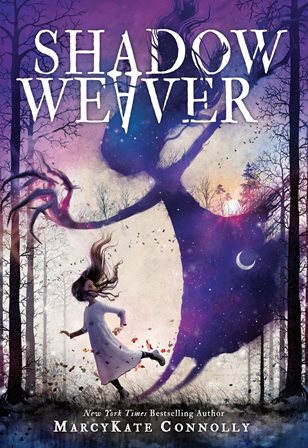When I was growing up, I was (and still am) a voracious reader. I loved nothing more than wandering through a strange new world full of magic, clever heroes and heroines, and fantastic creatures, and, of course, a good helping of adventure. Needless to say, fairy tales were a constant staple of my literary diet.

Therefore, it isn’t surprising that my own books remind readers of fairy tales and I’m often told that they have the feel of those classics. And I’m not alone—there’s been quite a resurgence in recent years of retellings and original stories in the same vein. If you’re considering writing a fairy tale or retelling of your own, here’s some food for thought to help immerse your readers in your own unique fantasy world:
First, consider why you’ve decided to retell or pull inspiration from fairy tales. If you’re like me, it can be a wonderful way to reinterpret stories you loved growing up. Plus, their themes and motifs exist across many forms of literature and are already inherent in our cultural consciousness. Tapping into that treasure trove of symbolism can enrich a story with deeper meaning.
Many people subscribe to the notion that there are only a certain number of stories in the world, and fairy tales have them covered and then some. Not to mention, the source material is epic—there are hundreds of fairy tales across cultures and the world. (Cinderella alone has hundreds of different versions!). Using fairy tales as a gateway for your readers just makes sense.
But the most critical part, in my experience, is finding just the right combination of the familiar tale and your own original story. This is no small task because the right blend will vary from story to story and your own unique take. A factor to consider here is whether you wish to write a true retelling (using the plot and character archetypes from the original) or if you simply wish to pull inspiration from a fairy tale (or multiple fairy tales). When writing the former, I’ve found it helpful to chart my book with the major plot points and characters of the original in one column and to outline my own story in a second column to ensure those correlations are clear. If you choose to pull inspiration instead—and this is the route I usually take—I like to keep a list of those themes, motifs, character archetypes, and plot points on hand while I draft so that those threads stay present in the story.
There are pros and cons to each method. One of the lovely things about writing a retelling is that the base structure of the plot is already laid out for you. It’s a skeleton that you can flesh out with your own spin on the story. But some writers may find adhering to that plot too restricting. It all depends on your preferred process as a writer and your story idea. Whichever path you decide to take, using fairy tales as a basis for writing your own can be a fantastic way to immerse your readers in your strange and wonderful new world.
MarcyKate Connolly is a New York Times bestselling children’s book author who lives in New England with her family and a grumble of pugs. Like the main character in her most recent book, Shadow Weaver, she once had an imaginary friend who did very naughty things like eating directly from the sugar bowl and playing hide-and-seek with her parents—without telling them—whenever they went to department stores. Later in life, she graduated from Hampshire College (a magical place where they don’t give you grades) where she wrote an opera sequel to Hamlet as the equivalent of senior thesis. It was also there that she first fell in love with plotting and has been dreaming up new ways to make life difficult for her characters ever since. Check out MarcyKate's website, Twitter, Facebook or see what she gets up to on Tumblr and Instagram.
Comments